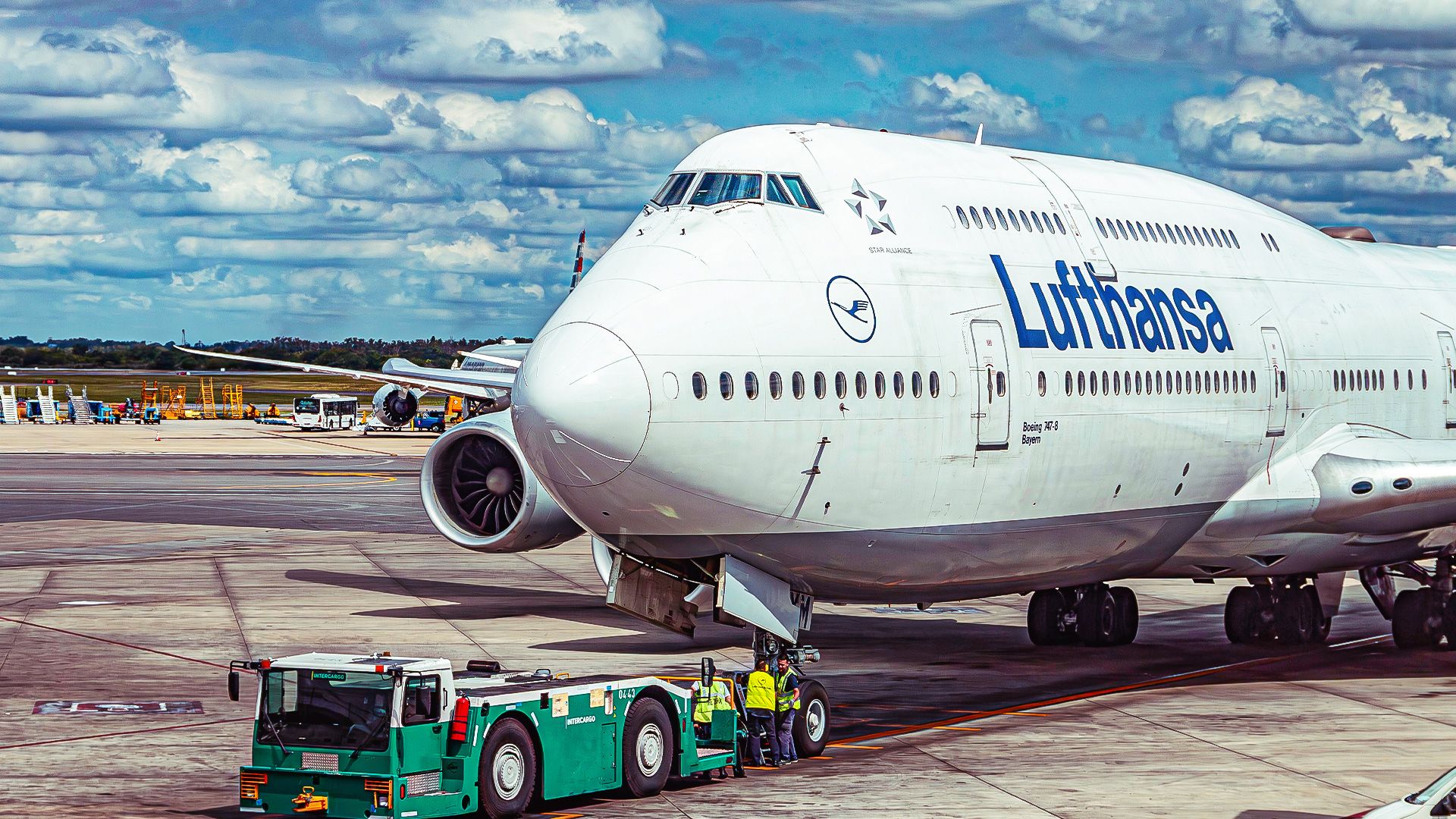World
Exploring the Design Choices Behind Boeing’s 747 Upper Deck

The Boeing 747, launched in January 1970 with its first delivery to Pan American World Airways, has become a symbol of aviation innovation. Despite its iconic status, many passengers and aviation enthusiasts often question the design choice of the aircraft’s partial second deck. This decision, rooted in the 747’s original purpose as a freighter, reflects the engineering priorities of its time.
Origins of the 747’s Design
Boeing’s development of the 747 coincided with significant changes in the aviation industry. The 1973 oil crisis prompted airlines to maximize passenger capacity to improve profitability. Initially conceived as a freighter, the 747’s design featured a limited number of windows on the upper deck and a cockpit positioned above the nose to allow for efficient cargo loading.
This configuration stemmed from Boeing’s earlier proposal for a military freighter, the CX-HLS, which ultimately lost out to the Lockheed C-5 Galaxy. In 1958, Pan Am approached Boeing seeking a passenger jet significantly larger than the Boeing 707, aiming to reduce operating costs by 30%. The CX-HLS mock-ups influenced what would become the 747-100, the first passenger variant.
Developing the Freighter Capability
The Boeing 747-100, the original passenger variant, was designed with only three windows on each side of the upper deck. Initially intended as a lounge area for crew and premium passengers, airlines later repurposed this space for additional seating. To accommodate this shift, Boeing offered an option to add windows on either side, recognizing the evolving market demands.
The engineering of the 747 included various optimized elements, such as wing configuration and engine placement, specifically for passenger travel. Notably, the raised cockpit design facilitated cargo operations, allowing for larger freight loading through a nose door.
Comparative specifications between the 747-100 and the more recent 747-8 highlight the aircraft’s evolution. The 747-8 boasts a range of 7,730 nautical miles, a cruise speed of 504 knots, and a maximum takeoff weight of 987,000 pounds, attributes that enhance its operational versatility.
Noteworthy specifications include:
– **Range**: 4,620 nautical miles (747-100) vs. 7,730 nautical miles (747-8)
– **Typical Capacity**: 366 (747-100) vs. 495 (747-8)
– **Fuel Capacity**: 48,445 US gallons (747-100) vs. 63,034 US gallons (747-8)
Despite the potential for a full-length upper deck, Boeing opted to retain the partial design, balancing aerodynamics and structural integrity. The configuration allowed the aircraft to maintain efficient long-haul capabilities while preserving the option for freighter modifications.
Lessons from the Airbus A380
The Airbus A380, the world’s largest passenger airliner, serves as a reference point for understanding the implications of a full-length upper deck. With 254 units delivered, the A380’s significant size offers advantages in passenger capacity but also presents challenges in terms of fuel efficiency and airport compatibility.
For instance, the A380’s wingspan is 16% larger than that of the 747-8, which limits its access to certain airport gates. Fuel efficiency comparisons show the Airbus A380 requires approximately 3.16 liters per 100 kilometers per passenger, similar to the 747-400, while the 747-8 improves efficiency to 2.82 liters per 100 kilometers per passenger.
Boeing’s strategic decision to design the 747 with a partial upper deck has contributed to its dominance in the air freight market. The 747’s versatility allows for dual functionality as both a passenger and freighter aircraft, making it a preferred choice for many airlines. With a 90% market share in the US air freight industry, Boeing continues to thrive in this sector.
As demand for air freight rises, the 747-8F variant, with its impressive range and loading capabilities, is poised to remain a valuable asset for cargo airlines. Joe Sutter, the chief engineer behind the 747’s design, made pivotal decisions that have not only shaped the aircraft’s legacy but also had lasting effects on the global aviation industry.
-

 Science2 weeks ago
Science2 weeks agoIROS 2025 to Showcase Cutting-Edge Robotics Innovations in China
-

 Politics2 weeks ago
Politics2 weeks agoJudge Considers Dismissal of Chelsea Housing Case Citing AI Flaws
-

 World2 weeks ago
World2 weeks agoBravo Company Veterans Honored with Bronze Medals After 56 Years
-

 Top Stories2 weeks ago
Top Stories2 weeks agoIndonesia Suspends 27,000 Bank Accounts in Online Gambling Crackdown
-

 Lifestyle2 weeks ago
Lifestyle2 weeks agoStone Island’s Logo Worn by Extremists Sparks Brand Dilemma
-

 Health2 weeks ago
Health2 weeks agoStartup Liberate Bio Secures $31 Million for Next-Gen Therapies
-

 Sports2 weeks ago
Sports2 weeks agoMel Kiper Jr. Reveals Top 25 Prospects for 2026 NFL Draft
-

 World2 weeks ago
World2 weeks agoHoneywell Predicts Record Demand for Business Jets Over Next Decade
-

 Health2 weeks ago
Health2 weeks agoTop Hyaluronic Acid Serums for Radiant Skin in 2025
-

 Politics2 weeks ago
Politics2 weeks agoNew Jersey Voters Urged to Register Ahead of November Election
-

 Lifestyle2 weeks ago
Lifestyle2 weeks agoMary Morgan Jackson Crowned Little Miss National Peanut Festival 2025
-

 Sports2 weeks ago
Sports2 weeks agoYamamoto’s Mastery Leads Dodgers to 5-1 Victory in NLCS Game 2









